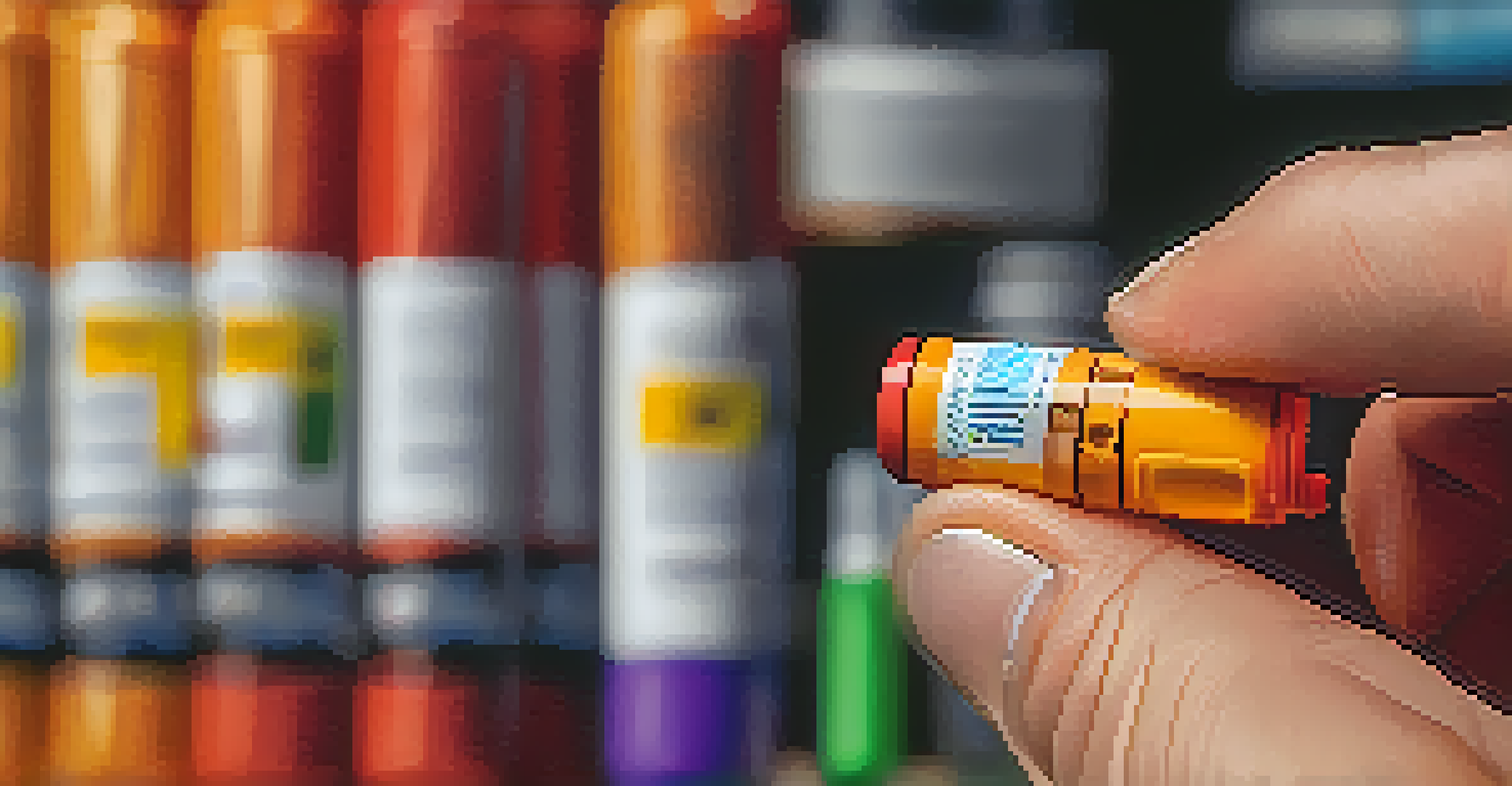How to Handle Food Allergy Emergencies: Step-by-Step Guide

Understanding Food Allergies and Their Risks
Food allergies can trigger severe reactions, sometimes within minutes. It's essential to recognize the common allergens, such as nuts, dairy, and shellfish, as they can lead to life-threatening situations for sensitive individuals.
Food allergies are not to be taken lightly. They can be life-threatening, and being prepared is the key to managing them effectively.
The body's immune system reacts to these allergens as if they are harmful invaders. This overreaction can cause symptoms ranging from hives and stomach cramps to anaphylaxis, which requires immediate medical attention.
Being aware of the risks associated with food allergies is the first step in prevention. Knowing who has food allergies around you can help you act quickly in an emergency.
Recognizing the Signs of an Allergic Reaction
Identifying an allergic reaction quickly can save a life. Common symptoms include swelling of the lips or tongue, difficulty breathing, and hives that can spread across the body.

Other signs to look for include gastrointestinal issues like vomiting or diarrhea, and in severe cases, a sudden drop in blood pressure, which can lead to shock. The faster you recognize these symptoms, the better the chances of a positive outcome.
Recognize Allergic Reaction Signs
Quickly identifying symptoms like swelling and difficulty breathing can save a life during an allergic reaction.
Stay alert, especially in social situations where food is involved. Educating yourself on these signs helps you respond swiftly if someone around you is having a reaction.
Immediate Steps to Take During an Emergency
When you suspect someone is having an allergic reaction, the first step is to remain calm. Assure the affected person that help is on the way, as panic can exacerbate the situation.
Education is the most powerful weapon which you can use to change the world.
Remove the person from the source of the allergen if possible, and check whether they have an epinephrine auto-injector, like an EpiPen. Administer it immediately if they do, as this can be life-saving.
After administering epinephrine, call emergency services or have someone else do it. It’s crucial to seek professional help even if the symptoms seem to improve.
How to Use an Epinephrine Auto-Injector Correctly
Using an epinephrine auto-injector might seem daunting, but it’s straightforward. Remove the safety cap, press the device firmly against the outer thigh, and hold it for a few seconds to ensure the medication is delivered.
It’s important to note that the injector should be used on the muscle, not on clothing, and you should never inject into the buttocks or hands. Following the instructions provided with the device can make a significant difference.
Administer Epinephrine Properly
Using an epinephrine auto-injector correctly is crucial for managing severe allergic reactions effectively.
After using the auto-injector, it's essential to seek medical attention. The effects of epinephrine can wear off, and further treatment may be necessary to manage the allergic reaction.
Calling for Help: When and How to Contact Emergency Services
Always call for emergency services if someone is experiencing an allergic reaction, especially if it’s severe. The sooner you get professional help, the better.
When you call, provide clear information: describe the situation, mention the known allergens, and explain the symptoms. This information helps responders prepare for the situation before they arrive.
While waiting for help, monitor the individual closely. If symptoms worsen, be prepared to provide additional information to the paramedics upon their arrival.
Post-Reaction Care and Follow-Up Steps
Once the immediate emergency is handled, focus on post-reaction care. Monitor the individual for any lingering symptoms or delayed reactions, as these can sometimes occur hours after the initial incident.
It's advisable to schedule a follow-up appointment with a healthcare provider to discuss what happened and review any necessary changes in the individual's allergy management plan.
Educate and Create an Action Plan
Educating others about food allergies and having a clear action plan can significantly enhance safety and preparedness.
Additionally, consider creating an allergy action plan that outlines the specific steps to take in the future. This can help prepare for any future incidents and provide peace of mind.
Educating Others About Food Allergies
Education is a powerful tool in managing food allergies. Share information with friends, family, and coworkers about the allergens and how to respond in an emergency.
Consider hosting an information session or providing written materials that explain what a food allergy is, the signs of reactions, and how to use an epinephrine auto-injector.

The more people understand food allergies, the safer the environment for those who live with them. Creating a supportive community can significantly reduce the risk of emergencies.
Creating a Food Allergy Action Plan
A food allergy action plan is a proactive approach to managing allergies. This plan should include a list of the allergens, symptoms to watch for, and a step-by-step guide on what to do in case of an emergency.
Make sure to include emergency contact numbers and details on how to use medications like epinephrine auto-injectors. Having this information readily available can make a stressful situation a bit easier to navigate.
Regularly review and update the plan as necessary, especially when new allergens or treatments arise. A well-prepared action plan can provide reassurance and improve safety for everyone involved.